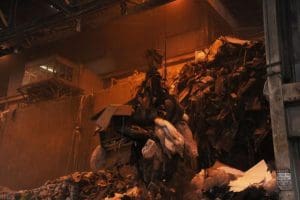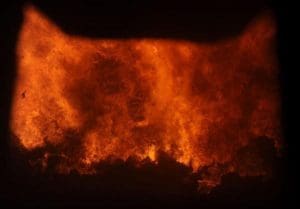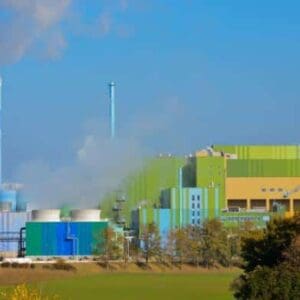Burning rubbish is generally considered a bad thing by the public. It produces toxins and pollutants which harm our environment; the public is advised to place their waste into the bin, rather than on the bonfire.
However, what if we could use waste as a fuel? What if we could use our daily produced rubbish from homes and businesses to produce power and heat?
This is exactly the purpose of ‘Waste to Energy’ or ‘Energy from Waste’ incinerators and in this blog, we’re going to outline how they work, how they produce energy and how they reduce landfill – all with little to no environmental impact.
Waste to Energy incinerators have been becoming more and more common since the first one was built in Nottingham, UK in 1874. Subsequently, there are now more than 900 WtE plants across the globe.
How does a WtE plant convert waste to energy?
Municipal Solid Waste (everyday rubbish from households or businesses) that would previously be sent to landfill is sent to the Waste to Energy plant. Upon arrival, the refuse is thoroughly mixed to ensure an even and complete burn and moved onto a conveyor belt for incineration.
The incineration process burns the waste into hot gas and ash, reducing its volume by 90% and its weight by 30%.
The heat is used to heat water and produce steam, in a very similar method to how coal and nuclear plants produce electricity; the water’s steam turns a steam turbine and produces power. The energy efficiency of these plants is around 14-28%. However, in certain WtE plants known as ‘cogeneration’ plants, hot gas left over from this process is then used to heat local businesses and used for desalinization, pushing the efficiency of this method as high as 80%.
Ash produced by incinerating the waste is the only bi-product. It is processed using magnets to remove any metals that can be recycled and the remaining ash can be used in construction as aggregate or sent to landfill.
Are the gases produced dangerous?
In a similar way to how burning fossil fuels produces greenhouse gases and nuclear power plants produce dangerous waste, the gases produced by burning waste can be harmful to the environment. However, much like with coal and nuclear, we have the technology to render the hot flue gases safe and harmless to release into the environment.
Once the gas has heated the water into steam, it’s sent through a series of processes that remove or neutralise the harmful substances and make it much safer for the environment. Firstly, a series of channels remove initial ‘fly ash’ – larger particulate ash that is carried by the gas – and deposits it into the ash pile.
Next, the gas is injected with activated carbon – carbon that has been treated with oxygen to increase its porosity – which absorbs and removes heavy metals, such as mercury and cadmium. The gas is then treated to neutralise the nitrous oxide content with an injection of ammonia or urea and any dioxin and furan emissions within the gas are removed through a sustained exposure to heat of over a 900 degrees Celsius.
Finally, the gas is treated with lime to remove any acidity (reducing any risks of acid rain), the gas is filtered through a series of fabric and particulate filters to remove all remaining particles, including a charged filter that uses electro static separation to remove particles.
After this entire process, the gases are well within safe levels to be released into the atmosphere.
Waste to Energy plants are not intended to replace or deter recycling. Owners of the WtE plants refer to them as the 4th R in the “Reduce, Reuse, Recycle” campaign: Recover. Recovering the stored energy in our waste should be the final step in reducing the amount we send to landfill.
How does WtE compare to sending MSW to landfill?
WtE very obviously provides the benefit of producing energy where landfill would not. However, in addition simply producing energy, WtE reduces environmental pollution. 1 metric tonne of MSW sent to landfill would produce on average 62 cubic metres of methane through anaerobic composition, with twice the global warming potential when compared to 1 metric tonne of CO2 produced during incineration. This, as a whole, reduces the amount of pollution released into the environment per tonne of waste, with the added benefit of producing energy.




